|
The World's Finest Presents 
THE WORLD'S FINEST MAIN PAGE · SITE SPECIALS · EDITORIALS · FORUM
In the Shadow of the Bat: Remembering Superman: The Animated Series
By Joseph Davis
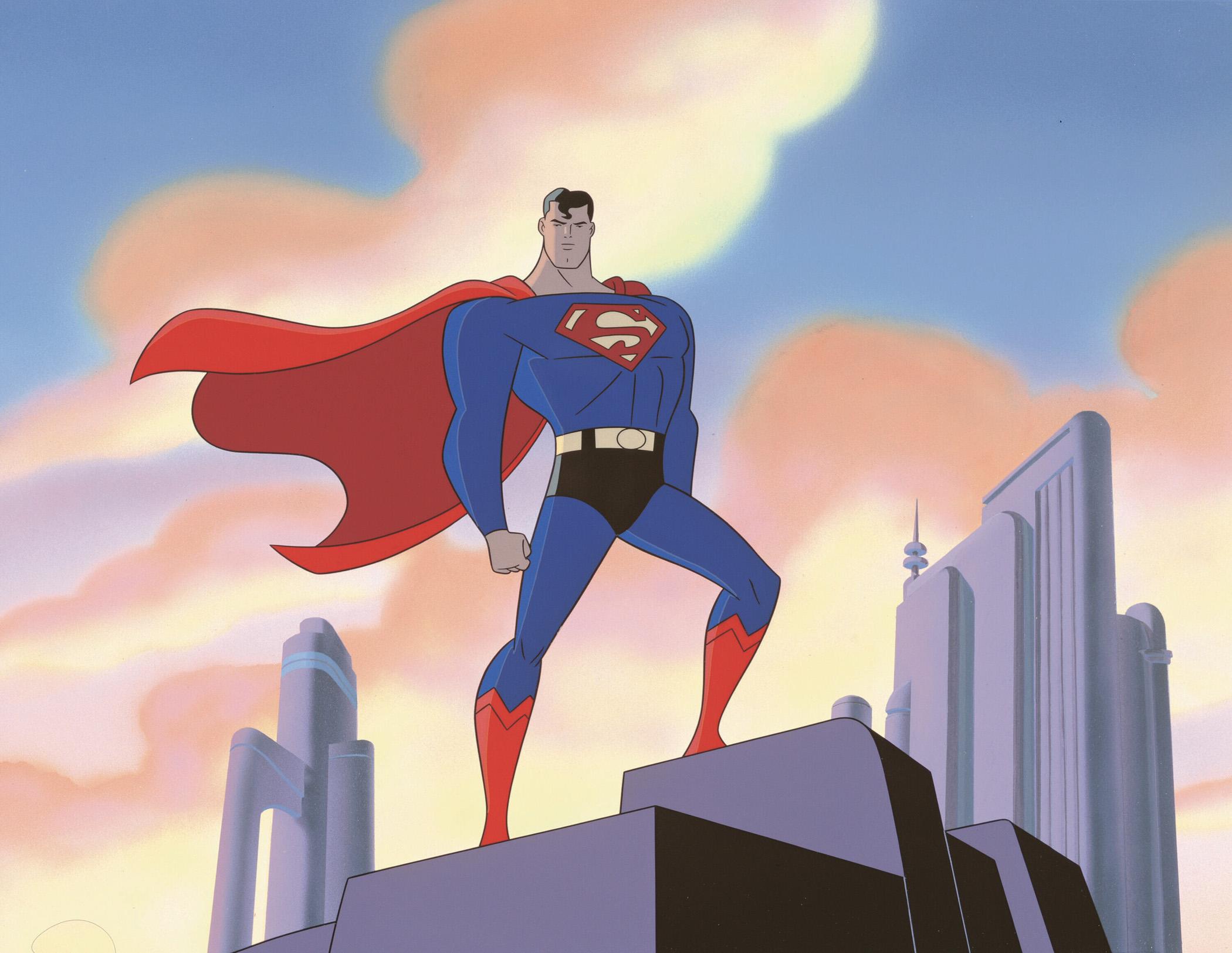
Recently, HBO Max announced that Superman: The Animated Series (STAS/Superman), the show featuring Wings alum Tim Daly as the Man of Steel that ran from 1996 to 2000, would be debuting on the streaming service on March 17, 2021 in hi-definition, finally allowing the series the privilege previously enjoyed by Batman: The Animated Series (BTAS) (HD in 2018) and Batman Beyond (HD in 2019). Later announcements from Warner Media confirmed that it would soon be available in different media formats, allowing a new generation the opportunity to enjoy this classic series. And while I’m glad that I can finally download an HD copy of this show to add to my media library, it does bother this old animation fan that its story hasn’t been told in the same manner as its more popular forerunner. Despite its quality and pedigree, it’s mostly remembered as an afterthought, sandwiched between the zeitgeist-shattering BTAS and the extreme ‘90s synergy of Batman Beyond. There was never a Superman: Animated art book by Paul Dini and Chip Kidd. Even the voice himself was overshadowed, as Daly was replaced by George Newburn in the Justice League series (Tim Daly was unavailable at the time, as he was filming the 2000-2001 remake of The Fugitive). So, on the eve of the Last Son of Krypton’s HD return, let’s take a moment to remember this remarkable, yet criminally underrated, television series.
The Beginning
In the mid-1990s, Warner Bros., riding high on the success of 1995’s Batman Forever, sought to package Superman in a similar manner (an issue of Entertainment Weekly from that time had “Can Superman Be the Next Batman?” on the front cover). And while much has been said about the outcome of that endeavor—Kevin Smith’s stories of the botched Superman Lives script have become legend—one of the things that every budding 1990s franchise needed was an animated show, so Bruce Timm—fresh off of BTAS and a brief dalliance with Freakazoid!—rejoined fellow producers Paul Dini and Alan Burnett and set out in catching their magic in a bottle for a second time.

The development process took many different permutations. At one point, the creative team apparently toyed with carrying on with BTAS’ “timeless” appearance, harkening back to the artwork of the 1940s Fleischer Superman cartoons. The above photo, retrieved from an eBay auction, is notable for featuring early drafts of Superman, the Daily Planet staff, Lex Luthor, Brainiac, and—surprisingly—General Zod and Ursa, two characters who would be replaced with Jax-Ur and Mala on the final show. In a roundabout way, this could be what the Superman cast might have looked like had they appeared on BTAS. In the end, however, this approach was shelved. In The Jack Kirby Collector #21 (1998), Bruce Timm reflected how “[w]e didn’t wanna go back and make it look just like the Fleischer cartoons; I didn’t want anybody to put our show up against Fleisher’s and say, ‘Well look, they’re doing the Fleischers, just not as well.’”

Another pitch that lasted “only a week” featured a more Brave and the Bold format, where Superman would team-up each episode with other DC Comics’ heroes. As Timm recounted in Modern Masters, Vol. 3: Bruce Timm (2004):
At a certain point, we toyed with the idea of opening it up and having the show—instead of being just Superman—kind of a prototype Justice League show, where it would be Superman and a rotating supporting cast of other super-heroes. I actually did a couple of development drawings along those lines and Jenette Kahn was the one who put that to a stop. She met with us and said, ‘You know, I just don’t think you guys should do this. You should give Superman the respect that he deserves and give him his own show, the way you did Batman, before you get into the Justice League.’ Right away we said, ‘Yeah, you’re right.’
As for Batman, he was not considered for this pitch, as “[h]e already had his own show,” according to Wizard Magazine Special Edition: JLA (1998).
Eventually, Timm and his creative team—many of them from BTAS—hit upon their formula. First, their show would shed the “dark deco” look of BTAS, and the characters would be sleeker, more streamlined, compared to their BTAS counterparts. Said Timm in Wizard #59 (1996):
[T]he show is set in the present, but it’s a very futuristic present. Metropolis doesn’t just look like New York. It’s much bigger and more optimistic-looking. We’ll still have a lot of art deco elements, so it does have a little bit of retro look to it. But it’s futuristic retro; we’re calling it ‘ocean-liner deco’ with all those zigzaggy, hard-edged buildings. Everything’s rounded off at the top. The city has an open feel.
The second major aspect of Superman’s style came from the influence of legendary comic book artist Jack Kirby. Said Timm in The Jack Kirby Collector #21 (1998):
When the time came to do Superman, we really didn’t know what to do that would make it visually different from Batman but at the same time just as cool. […] One of the things we wanted to do with Superman was to kind of ‘Marvelize’ Superman a little bit. That’s why the police don’t just carry handguns, but these Kirby-like weapons. All of the science-fictional elements in this series—whether it’s a tank or something from outer space—has a kind of Kirby feel to it, or at least we try to. Even in the pilot, the origin story, there’s this Brainiac satellite floating around Krypton and we tried for the longest time to come up with a design for it, and we didn’t come up with anything I really liked. I found this Kirby gizmo in one of the Kirby comics and I turned it upside-down and said, ‘Hey! That’s our satellite.’ There are things like that all the way through the show where we would just find Kirby-ish elements and turn them into things in the Superman show.
Whereas BTAS Gotham City was dark, film noir, and set in an indeterminable mid-20th Century time period, STAS Metropolis was bright, set in the present, and peppered with futuristic tech that drew heavily from the works of Kirby.
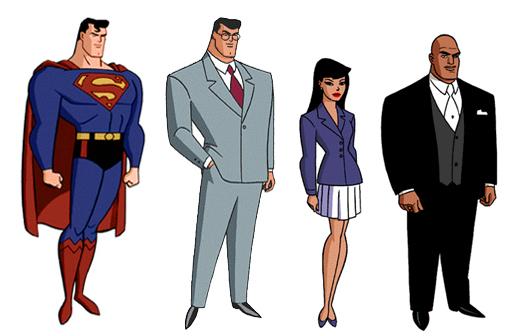
The Cast
The look and style of the series established, the creative team moved to the development of the cast. One of the major hurdles that any Superman vehicle runs into is the comparison to what has come before. For much of the franchise’s history—both from the pre-Crisis comics and the Christopher Reeve movies—Superman perceived as an overeager boy scout, Clark Kent is a mild-mannered wall flower who pines for Lois, Lois Lane who ignores Clark but lusts for Superman, and Lex Luthor is a bald con man whose primary focus is crooked land deals (and, in Gene Hackman’s case, hideous leisure suits and toupees). Fortunately for the series, the creative team wisely made several deviations from this formula.
The first major change can be found in the Man of Steel. Normally portrayed as being a very public “hero’s hero,” this version was notable for taking a few cues from the Dark Knight’s playbook. “We’re making Superman a little more mysterious,” Timm said in Wizard, continuing, “When he saves somebody, he doesn’t stand around and say, ‘No problem, citizen, it’s all part of the job. Thank you, Commissioner, blah, blah, blah…’ He saves somebody and he’s off again. He’s quiet and mysterious.” This new “mystery man” persona was coupled with a darker color palate, trading his regular colors for a darker red and an almost navy blue. In addition, the creative team traded in his red shorts—often a punchline of superhero costumes—for a black pair featuring a single red highlight (though the Justice League series would eventually return the red shorts), and he removed the second yellow symbol on his red cape. “[I]n some scenes in long shots, [the costume] almost looks black,” Timm added.
While the changes to Superman were significant, it was nothing compared to the changes made to Clark Kent. Seeking to distance themselves from the clumsy nebbish from the past—especially considering how they just portrayed Bruce Wayne in a similar manner in BTAS—this incarnation of Kent is similarly quiet and unassuming, but first and foremost a hard-nosed reporter. Said Timm in Wizard #59 (1996):
When we were looking back at a lot of other interpretations of Superman, [we found that] in the 1950s TV show, largely because of limitations with budget, the action was mostly on Clark. They were playing him as reporter / private investigator, and that added a nice edge to his personality. We thought that was something to capture in animation.
This pairing worked well with the show’s Lois Lane, played by returning actor Dana Delaney (Batman: Mask of the Phantasm). Portrayed as an intelligent, aggressive journalist, she was not afraid to get into people’s faces while Clark Kent stood back and paid attention to the details. Initially dismissive of the man she would nickname “Smallville,” she grew to respect his skills as a reporter. Meanwhile, as Superman, he was able to provide her assist when she needed it (and, considering the type of crime in Metropolis, she needed it). And while there was an attraction between Lois Lane and Superman, it didn’t turn into the unhealthy love triangle from the Silver Age comics. Said Timm in Wizard (1996) of their relationship:
They’re like a brother and sister who don’t get along. Lois definitely sees Clark as a threat. She’s a hotshot reporter at the Planet, and here comes this guy who starts scooping her on all these stories, especially involving Superman. She can’t figure out how he does it. […] I don’t think there are really romantic sparks between them, but there are definitely romantic sparks between Lois and Superman. It’s not like Clark pines for Lois. We won’t be playing up that angle at all. Clark can have his cake and eat it too. When he’s Superman, Lois is crazy for him, but when he’s Clark, he’s ribbing her all the time. It’s a strange relationship.
Standing in opposition to this ‘90s Woodward and Bernstein is, of course, Lex Luthor, portrayed by character actor Clancy Brown. Unlike the supervillain / mad scientist incarnation from Justice League, this version of Luthor drew heavily from the post-Crisis/Man of Steel character created by John Byrne in 1986. According to the original character profile from the Kids’ WB! website, Luthor grew up in the Suicide Slum neighborhood of Metropolis, then a city in decline, but then used his genius (along with an insurance settlement from a “mysterious auto accident” that killed his parents) to get a master’s degree at MIT, which he used to build his business, his fortune, and the city of Metropolis. At the series’ beginning, Luthor is the city’s hero, as he has brought Metropolis back from decline—half of the buildings in the city bear his name, and his businesses employ two-thirds of the city’s population. And it could be argued that all of the “futuristic Kirby tech” mentioned above could be the result of Luthor’s genius. As for the character’s influences, Timm had this to say in the DVD special features of Superman: The Animated Series, Vol. 1 (2006):
[Clancy Brown] was like the perfect Luthor to me. Clancy just had this thing—in my mind, I always saw […] Luthor as being like Telly Savalas [as villain Ernst Stavro Blofeld] in On Her Majesty’s Secret Service, one of my favorite James Bond movies, [where he, in essence, portrayed Blofeld as] a cultured thug. He was basically like this bruiser who wanted to be taken seriously and wanted to be […] treated like a baron, and I thought that was like a good way to treat Luthor. [Luthor] is rich and powerful and kind of elegant, but at the same time—just barely beneath the surface—he’s a brute. There was something in Clancy’s delivery during his audition that reminded me of Telly, so it was just serendipity.
This trio (quartet?) aside, the presence of the supporting cast on the series was relatively thin. Aside from scenes (or episodes) highlighting Ma and Pa Kent, Dan Turpin, Mercy Graves, and John Henry Irons, the remaining cast primarily served as set dressing. There was never really a spotlight on Perry White or Maggie Sawyer. Jimmy Olsen was, at best, a slightly dim tagalong for Lois when Superman was soaring across the skyline. Professor Emil Hamilton was just Superman’s science buddy until, out of nowhere, he showed some spine in the last episode. And Bibbo (aside from one significant scene in the pilot) only made brief appearances as comic relief.

The Rogues Gallery
Of course, the measure of any superhero is in their enemies, but historically the Man of Steel’s Rogues’ Gallery has had some problems. Said Timm in Wizard #59 (1996):
Batman was easier because he had such a great rogues’ gallery. Almost all of the villains were really interesting and exciting because they were all so psychologically screwed up and so weird and inventive. I went out and got that Superman encyclopedia and thumbed through it to see what we might want to do, and the list of villains was staggeringly dull. There’s the Parasite, Brainiac, and Bizarro—and that’s it. All the other classic Superman villains are old, fat guys in business suits…the Toyman, the Prankster. Where’s the visual appeal there? We’re having to either re-invent these guys from scratch or create new villains.
And reinvent they did. As opposed to Batman’s villains, where the creative team got to cherry-pick the best elements from the characters’ long and storied histories, in many cases here they had to strip Superman’s foes down to their name and basic gimmick, and then rebuild them into something better. I would argue that, in addition to the aforementioned Lex Luthor, the Superman creative team succeeded in rebuilding Superman’s Rogues’ Gallery into one of the finest line-ups ever.
Of these revamped characters, probably the most changed was Brainiac. Created in 1958 by writer Otto Binder and artist Al Plastino (fun fact: along with his brother Earl, Otto wrote the classic “I, Robot,” the science fiction short story that would go on to influence author Isaac Asimov), the original Brainiac was a “12th level android intelligence” from the planet Colu who, disguised as a humanoid alien, was a galactic traveler who studied civilizations to see if they were ripe for conquest and, when the mood struck it, would use a shrink ray of its own design to take samples of each world’s civilization by shrinking a major city from each planet and storing them in glass bottles. Over time, however, it became known mostly as Superman’s other bald villain—this one green—who went around wearing a pink polo shirt and no pants. However, under the guidance of the Superman creative team, the villain was revamped to be the HAL 9000 of Krypton, an intelligent A.I. who hid evidence of the planet’s impending fate to save itself. Afterwards, Brainiac—taking a cue from Marvel Comics’ Galactus—traveled the cosmos cataloguing the technology of various civilizations, and then destroying them afterwards.
Let us pause to consider how simply brilliant—yet painfully obvious—this take on the character was. Why did it take over thirty-five years for someone to think of this? Not only does it simplify the character—who underwent various reboots in its comic book career—but it ties it more strongly to the Man of Steel and his history. It makes the last active part of his home planet his enemy.
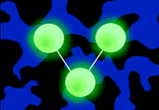
The second major villain figured out, the creative team took cues from their time rethinking BTAS villains, and the rest fell like dominoes. Under their guidance:
- Metallo, formerly a one-note villain in a robot body with a “heart” made of kryptonite, became an amoral hedonist trapped in a powerful, yet senseless, Terminator-like body. Thanks to Luthor, the former John Corbin could not taste food, savor smells, or enjoy the company of women (the most striking scenes in “The Way of All Flesh” were the impotence he felt when confronted by Lois or Luthor’s boat companion). He may have cheated death, but now he is a mind stuck in a perpetual state of sensory deprivation. All he has is his hatred of Superman.
- Parasite, a purple brute who can leech the energy of others, became a stalker and bully to Superman’s boy scout. Initially a low-rent thug bullied himself by an overbearing partner, Rudy Jones became the aggressor himself thanks to a dip in toxic chemicals. Also, in a twist native to this series, not only does Parasite absorb energy and powers, but he also absorbs skills and memories. The tragedy of the character—and a blessing to the Man of Steel—is that these phenomenal powers were wasted on a slacker like him (one episode has him helping the cops in exchange for cable TV in his cell, rather than freedom). Could you imagine the damage he could have caused if he got his hands on Batman?
- Bizarro, Superman’s imperfect duplicate with a face resembling rough-edged plaster of Paris, became a tragic Frankenstein-like example of the dangers of cloning. In the short term, Luthor’s fear of the threat that the Man of Steel could become was realized in the creation of this creature with all the destructive power of Superman, but the intelligence and maturity of a child. Long term, however, he was part of the flawed first generation of Kryptonian clones, which would later be perfected in Justice League Unlimited via the creations of Galatea and Doomsday. All that damage from a few drops of Kryptonian blood.
- Perhaps the most reminiscent of the villains of BTAS was Toyman. It follows the previous series’ formula of a victim taken advantage of by a powerful figure (here Bruno Manheim), only to return with a costume, gimmick, and thirst for vengeance. However, the character is no longer an “old, fat guy in a business suit,” this version was a nightmarish combination of Mr. Rogers and a ventriloquist dummy. Said Bruce Timm on the former Toon Zone message boards (circa 2006): “Toyman’s design is actually based on a generic ventriloquist puppet design that was fairly common from the 1940s to the 1970s (and may still be available, for all I know). Paul Winchell’s ‘Jerry Mahoney’ was one such.” And while his debut episode identifies him as the son of toymaker Winslow Schott in “Fun and Games,” who knows? Could it be Schott himself or, for that matter, was the figure menacing Superman a toy himself, controlled remotely?
- Pitch-hitting for General Zod and Ursa, Jax-Ur and Mala became the resident Phantom Zone criminals for the series. Overall, they were pretty one-note—revenge on the Son of Jor-El and planetary conquest—but Mala was notable for the rage she felt as her romantic overtures were rejected by Superman, sending her on a Miss Piggy-like rampage.
- Finally, we have Mr. Mxyzptlk, voiced by Gilbert Gottfried. The Fifth Dimensional imp was originally a character writer Paul Dini dreaded getting to, but fortunately he figured him out when the time came. “Mxy was fun to write,” Dini said in a 1997 interview in the now-defunct Animation Nerds Paradise website, adding “[w]e didn’t want him to be like The Mask, or a Robin Williams-type goofy character so, basically, I just made him a little shit—a mean little creep who just wants to screw around with Superman for the sake of screwing around with him.” This persona (and the voice actor) proved popular enough to be revisited in 2016’s Justice League Action series. As for his physical appearance, Dini went on to say, in a 1998 interview at the now-defunct Harley’s Haven website, “Bruce [Timm] and I looked at all the versions of [Mr. Mxyzptlk] and, while the more current one was the one we had grown up with, there was something about that old ‘Elmer Fudd’ version that just appealed to us as an animated cartoon character.”

Adding to the villains listed above, the creative team did create some new adversaries for Superman, primarily in the form of the electrically-powered Livewire, the solid-light generating Luminus, and the pyrotechnic mutant Volcana. And while they may have lacked the depth of the above villains, they did add some much-needed muscle to the team. Also, during this retooling process, the influence of Jack Kirby made its mark in subtler ways. Said Timm in The Jack Kirby Collector #21 (1998):
A lot of the Superman villains aren’t nearly as interesting as the Batman villains. Batman has the best rogues’ gallery in comics and the Superman rogues’ gallery is pretty dull. We would take characters like Brainiac and Parasite—that are pretty dull-looking in the comics—and go, ‘If Kirby were designing them, what would he do to them?’ So we would put Kirby-type costumes and Kirby touches on them to make them more interesting.
Finally, it should be noted that additional villains came in the form of characters loaned to the show via the hero team-up episodes. In addition to “antihero” Lobo, who appeared in the two-part “The Main Man” episode, the show benefited from appearances by Sinestro (from the Green Lantern team-up episode “In Brightest Day…”), Weather Wizard (from The Flash team-up episode “Speed Demons”), and Karkull (a revamp of the Golden Age villain Ian Karkull, from the Dr. Fate team-up episode “The Hand of Fate”). The most notable of these was Sinestro, voiced by Ted Levine (Buffalo Bill from The Silence of the Lambs), whose redesign would serve to influence the character’s comic book appearance in Geoff Johns’ Green Lantern run (several issues of his run traded his pinkish-purple skin tone for the blood red hue he wore in the Superman, Justice League, and Justice League Unlimited).
However, despite the formidable team assembled above, there is one major villain left to consider…
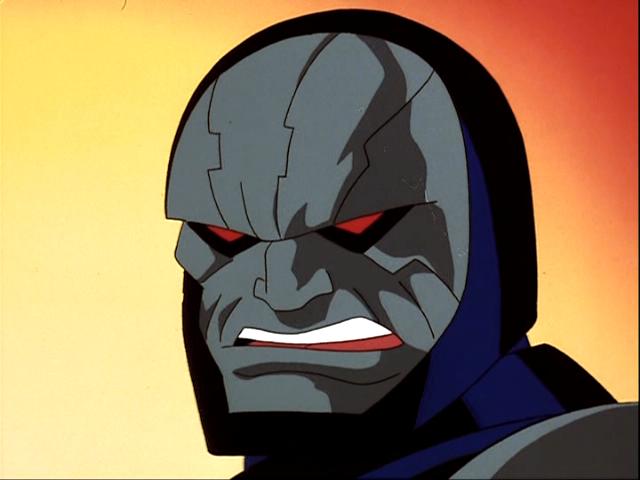
Darkseid and the Forces of Apokolips
Considering the amount of influence that the works of Jack Kirby had on this series, it was only natural for Bruce Timm and company to utilize the DC Universe’s “big bad” villain as a major recurring foe for the Man of Steel. “Thank God for Darkseid,” Paul Dini said in Wizard #59 (1996), after discussing the lack of usable Superman villains. Added Timm in The Jack Kirby Collector #21 (1998):
Again, when we were doing Superman, we were trying to find interesting villains for him to come up against. The regular Superman villains are pretty uninteresting and most of them are fifty-year-old fat guys in suits. We figured, ‘Well, there’s Darkseid; let’s definitely use Darkseid in the show.’ So Paul Dini and I were sitting around one day trying to figure out what we were going to do with Darkseid and the New Gods, and we just started throwing out ideas.
For one thing, what does Darkseid want? It’s not just enough for him to conquer the Earth; why does he want to conquer the Earth? We went back to the comics to figure out 1) what is Darkseid’s motivation and 2) what is the Anti-Life Equation? We decided we couldn’t figure it out ourselves. We got the idea that maybe even Jack [Kirby] didn’t know what he was doing! He had this really cool idea and even if he had something that he meant to do with it in the comics, the series was cancelled before he had a chance to. The Anti-Life Equation makes sense in the comics, but it’s kind of a big nebulous thing, and we only have 20 minutes—or, at most, 40 minutes—to tell a story. So we had to make it easy for eight-year-olds to understand.
Our version of the Anti-Life Equation is basically that he feeds on the despair of people, so that’s why he wants Earth and that’s why he wants to destroy Superman. He’s going to come to Earth and take their greatest hero and reduce him to nothing. He’s going to feed off the despair of the entire planet.
Darkseid’s presence weighed heavily upon the Superman series. In an early example of serialized storytelling for the DCAU, the Lord of Apokolips appeared as a cameo early on in the series—in the Season One episode “Tools of the Trade” (much like R’as Al Ghul did in the BTAS “Off Balance”)—and then made a small appearance in “Father’s Day,” which set the stage for three—count ‘em!—three two-parters towards the series’ end. In a 2003 interview with the former Toon Zone, Bruce Timm discussed the appeal of Darkseid and his rivalry with Superman:
[Darkseid has] class, baby! Of course, that’s just part of his appeal, but it is an important part. He’s a massive, ugly brute, but his harsh physical look is contrasted by a stillness, a soft-spoken speech pattern, and a supreme self-confidence. He’s a monster, yes, but he’s an elegant one. [Also,] aside from the occasional Omega Blast, [Jack] Kirby almost never had Darkseid engage in physical action and, usually, he doesn’t have to. With that powerful presence—and that voice—he automatically commands attention, respect, [and] awe.
He’s very much like the classic James Bond villain. As Kingsley Amis [a James Bond historian] pointed out, the best Bond villains—Goldfinger, Dr. No, Blofeld—are all evil authority figures, or ‘dark father’ figures, with Bond playing the role of the disrespectful, willfully disobedient schoolboy. It’s implicit in ‘Apokolips…Now!,’ in the ‘Lucifer tempting Jesus’ scene on the cliff, and it’s explicit in ‘Legacy,’ with Darkseid’s ‘adoption’ of Superman. The climax of ‘Legacy’ especially resonates with that father / son dynamic: ‘You’ve been a bad boy. Now take your punishment.’
(‘Little Girl Lost’ was the only time Superman could claim an unqualified victory against him. In both ‘Apokolips…Now!’ and ‘Legacy,’ Darkseid managed to have the last diabolical laugh.”
[…] Darkseid doesn’t just want to physically crush his enemies; he wants to shatter their spirit, to humiliate, debase, and demean them. It’s that little extra measure of cruelty that sets him apart from the other villains. [He is] the most powerful, the most sadistic, the most willfully evil villain.
With Metropolis built, the cast in place, and the armies of Apokolips waiting to strike off-camera, the series was ready to debut.
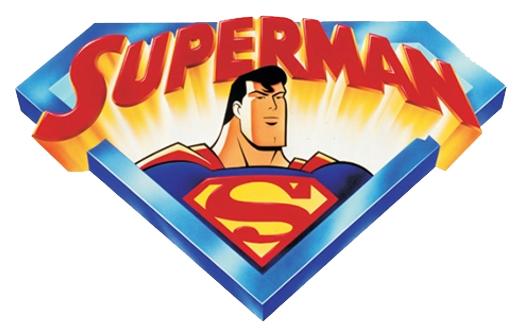
Season One (1996)—Superman: The Animated Series
Superman debuted on Friday, September 6, 1996 in primetime with the three-part “The Last Son of Krypton” pilot. This episode was notable for the Man of Steel not actually appearing until the end of Part Two, with a significant chunk of that episode occurring in Smallville and the entirety of Part One featuring Jor-El versus Brainiac on Krypton. Still, it was an excellent debut, featuring the introductions of the primary cast, and—through his father’s heroism—how Superman’s valiant nature is certainly in his blood. This was then followed the next day by the show’s debut in its regular Saturday morning time slot, where it would air for its first year.
In Season One, you could definitely see the influence of BTAS in the storytelling. For example, much like Batman’s colorful rogues, you could see ways to empathize with Superman’s villains despite their actions. In “Fun and Games,” you could see how the machinations of Bruno Manheim caused the son of Winslow Schott to lose his childhood and, in turn, seek his revenge as Toyman. In “Feeding Time,” you could understand how Rudy Jones turned from victim to victimizer with the power of the Parasite. This could be primarily seen, however, in the story of John Corbin, aka Metallo. If you watch his first three appearances—“The Last Son of Krypton,” “The Way of All Flesh,” and Season Two’s “Action Figures”—you can watch as the metal closes in on him, destroying the man: first as a pilot in a suit of armor (the Lexosuit), then as a mind starved for sensation whose “flesh” is rotting away, exposing the metal underneath; to—finally—an metal android body piloted by a mind seized by the madness of isolation. These stories were told in episodes that were every bit the equal of “Mad as a Hatter,” “Two-Face,” and—dare I say it?—“Heart of Ice.”
The exception to this, surprisingly, was Lex Luthor himself, but he was never a victim anyway. Unlike Batman’s rogues, who are often preyed upon by another, inspiring their thirst for vengeance, Luthor is cut from the same mold as other BTAS villains, such as crime boss Rupert Thorne and fellow CEO Roland Daggett. He’s not the victim, he’s the victimizer. He’s the one who preys upon others, which—in turn—creates other villains. It is through Luthor’s actions, either directly or indirectly, that created Mercy Graves, Metallo, Bizarro, Livewire, Luminus, and Sgt. Corey Mills (“Prototype”). Luthor was the one who sought the attention of Brainiac, whose presence threatened to destroy the Earth. And it was Luthor’s press conference that enraged Mala, leading her to release Jax-Ur and attempt planetary conquest, in “Blast from the Past.” At the beginning of the series, it was Luthor who was the primary antagonist—he got the ball rolling for a significant number of episodes.
(Another interesting Luthor detail is how, in Season One, Luthor’s directions lead to a number of “disappearances.” For example, he requests that the two thieves in his museum be “dealt with” in “A Little Piece of Home” and, later in that episode, directs Mercy to see a scientist in his employ “safely home.” Also, in “The Way of All Flesh,” Luthor taunts Superman over the disappearance of Dr. Vale [“And what makes you think there’s any of him left to find?”]. Luthor’s casual murders were phased out after Season One, or they were at least unsuccessful [“A Fish Story”], but it added extra depth to his villainy that I greatly appreciated.)
If there were any missteps in Season One, I think it would be the two-part episode “The Main Man,” featuring Superman’s brawl with Lobo (voiced by Brad Garrett, from Everybody Loves Raymond fame). Not only was their eventual adversary The Preserver forgettable, but the whole thing felt drawn out, and it probably could have been handled in one episode. In fact, I think it’s a shame that, barring a cameo in “Warrior Queen,” the Last Czarnian didn’t make more appearances on the show and, frankly, I’m surprised that DC Comics hasn’t made more of an effort to fold him into Superman’s Rogues Gallery as a recurring adversary. As reflected by writer Alan Grant in a 1994 Wizard interview, “[they’re] from strikingly similar backgrounds—one the sole survivor of a destroyed world he will forever mourn, the other the sole survivor of a world he destroyed himself and still chuckles about sometimes.”
Anyway, while not making as big as splash as its predecessor, Superman was a hit, and further episodes were being developed. However, a change was coming to the Kids’ WB! line-up, and it was coming on familiar ebony wings…
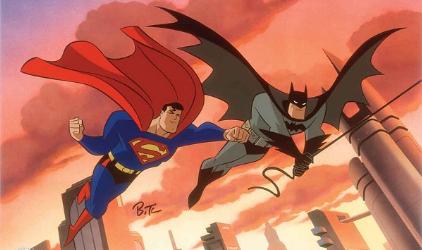
Season Two (1997)—The New Batman / Superman Adventures
With the popularity of Superman came the desire on behalf of the network to replicate that success, and the easiest way to do so was by resuscitating an old cash cow. Therefore, it was announced that Batman would be returning to animation with The New Batman Adventures, a continuation of Batman: The Animated Series, but rather than have two separate shows on the line-up, they would be combined into one: The New Batman / Superman Adventures. In addition, bolstered by the acquisition of the original eighty-five BTAS episodes from Fox, the series would expand from its single half-hour Saturday slot to airing six times a week, with a ninety-minute time slot on Saturday. However, while bringing the Dark Knight and his kingdom into the fold was welcome, it is worth noting that, while grouped together as one, Superman and The New Batman Adventures were still two fundamentally different shows, and it had the unfortunate effect of forcing one creative team to do the task of two.
Despite this added burden, there were many highlights to Season Two. “The Promethean” gave us a take on Kirby’s Promethean Giants, as well as the debut of General Hardcastle, a minor character who would become more significant later on. “Speed Demons” introduced us to The Flash, our first superhero outside of Metropolis or Gotham. “Double Dose” gave us a team-up between Parasite and Livewire that was so heavily laced with sexual innuendo that the Man of Steel’s only recourse was to cover himself with latex. “Ghost in the Machine” introduced the troubling relationship between Luthor and Mercy Graves. The three-part episode “The World’s Finest” gave us the Batman / Superman team-up that, to this day, surpasses anything that director Zack Snyder could ever think of. But the finest half-hour had to be “The Late Mr. Kent,” an episode with the strongest ties to the best of BTAS, where Superman must free a wrongly-convicted man from death row while dealing with Clark Kent’s “murder” during his investigation. Even with competition from The Dark Knight, The Last Son of Krypton could still hit it out of the park.
This is not to say, however, that this was a seamless transition. In an interview with the creative team in Wizard #72 (1997), it was admitted that “the network has mandated the series [specifically Batman] become lighter and more appealing to kids,” as summarized by writer Rob Allstetter, and this became apparent when The New Batman Adventures debuted, featuring Batman with three sidekicks (Batgirl in nearly every episode, with Robin and Nightwing as well) and a focus on “supervillain of the week” stories. Bruce Timm added:
The kids enjoy the fantasy element of the bizarre villains—Joker, Clayface, Catwoman, Scarecrow—so, if we concentrate on stories that deal heavily with them, either a plot they hatch in Gotham, or some unique character quirk within them, that seems to propel a fun story that Batman can get involved with.
And while some excellent episodes did come out under this mandate—“Never Fear” and “Over the Edge” come to mind—the shift in tone was noticeable in ways other than the redesigned cast. For example, compare the nuanced portrayal of the villain Two-Face in his best BTAS episodes (“Two-Face,” “Second Chance”), where his vulnerability and friendship with Bruce Wayne are key plot points, with his (forgive me) two-dimensional appearance in TNBA’s “Sins of the Father,” where he’s just a themed bad guy ransoming the city. Simply put, this mandate changed the Batman series, and it bled into Superman as well.

An example of this tonal shift can be found in the Season Two episode “Livewire,” which dealt heavily with the public’s perception of the Man of Steel. In the episode, talk radio personality Leslie Willis rails against Metropolis’ slavish devotion to Superman. Why? Well…at one point, she does imply to Lois that it may have a feminist basis (“To make it in this town, I had to be better, sharper, and louder than any man to get half as much notice! And nothing was handed to me on a silver platter either, unlike your friend Superman!”), but a more likely culprit is the episode’s implication that the radio station is owned by Lex Luthor, who probably wants a shock jock trashing Superman on a regular basis. Then, after Willis is transformed into Livewire and goes on a rampage for…some reason, there’s a scene with reporters asking Superman if he did everything he could to save Willis from being electrocuted, considering what she said about him on air, and even by episode’s end there is still a question as to the Man of Steel’s involvement in regards to the public. Aside from the flashy fight scenes, the plot of the story kind of goes nowhere. However, in a 2006 World’s Finest interview with co-writer Evan Dorkin, he revealed that there was originally more to this episode:
I’m not crazy about the episode; I wanted a bigger ending, and I think a few things fall flat. […] ‘Livewire’ was supposed to be a first season episode, and the early premise had a lot more material about how people were coping with the concept of having Superman in their midst. He was supposed to ‘come out’ in the episode, appear publicly for the first time and address the citizens of Metropolis, answering public concerns about his being a potential threat, or posing as a hero to cover a plot to invade the planet by his fellow super-beings. I think that lent itself to some more interesting material than what we got.
Further cracks began to appear. Metallo, after strong appearances in “The Way of All Flesh” and “Action Figures,” returned as a one-note villain in “Heavy Metal” and Season Three’s “Superman’s Pal.” They even returned his ripped skin into exactly the same configuration from the end of “Flesh,” even though it was long gone by “Action Figures.” The episode “Warrior Queen” introduced the alien villain Maxima who, in the comics, was a warrior seeking Superman as a mate in order to add his genetics to her family’s bloodline. With her enhanced strength and psionic powers, acquired through generations of selective breeding, she could have been a formidable femme fatale in the same way Catwoman is for Batman. However, in the animated series, she was portrayed as a bratty royal who wanted Superman merely because he was hot. However, the most disappointing cuts may have been to “Little Girl Lost,” the two-part episode debuting Supergirl. Aside from a surprising amount of material that was cut for time (and later reused in Superman Adventures #21), co-writer Evan Dorkin revealed how the ending was originally very different:
Sarah [Dyer] and I have writing credits on both episodes. Paul and Alan have co-writing credits on part one, and we have a story credit on the second episode, but I forget the name of the writer [Rich Fogel]. The second half was changed fairly last minute, and a regular series writer reworked the plot. Originally, Granny Goodness was bringing together wayward teens and training them with Apokolips technology because she was harvesting them as source material for creating new Parademons. It was a riff on Paradise Island from Pinocchio, where the kids were taken in and transformed into donkeys.
Here, the kids were taken to Apokolips to be transformed into Parademon troopers to bulk up Darkseid’s army. It was going to be revealed that Parademons were all genetically-engineered beings: Armaghetto inhabitants, slaves, captured aliens (Thanagarians, Martians, etc.). We were going to show this huge, Nazi-like Krupp Works for Parademons with being on chains being dragged into chambers where they’d emerge as soulless Parademons. The two-parter ended with Supergirl and Superman in full-scale battle on.
Anyway, from what I was told, a producer who had signed off on the original premise balked and then asked for changes. We had already done several drafts, and after they handed us the new plot, we ended up doing another slew of drafts. It was nuts. […] I do wish the Apokolips ending was retained. I always thought the giant meteor / comet from space was hokey and made very little sense as a reason for Granny to break the pact and traffic with a bunch of useless kids. Body harvesting kids for shock troops was creepier, made somewhat more sense, and was very Kirby / Apokolips in tone (at least in my opinion).
Frankly, I was shocked when I read this information in the 2006 interview. On the surface, it’s a great plot point—one I was surprised was vetoed. By using abducted children to create Parademons for his army, it greatly enhances the evil of Darkseid in a way that the previous episodes were unable to do. It also added many potential ethical questions and issues. Could it be reversed? Could they be rehabilitated and freed from Darkseid’s control? I could certainly see the series explore this complexity in the BTAS era, or the Justice League Unlimited one, but in the Kids’ WB! era—with its “for the kids” ethos—I suspect the execs were trying not to upset their target audience. And, I will admit, it certainly doesn’t look good knowing that when Superman punches a Parademon, he’s punching an abducted child (hell, in “Legacy” there are scenes of him straight-up incinerating them with his heat vision, turning them to ash).
Finally, there was another way that the revival of Batman affected Superman’s show: in the episode count. Originally intended to be a 65 episode run, the final number of Superman episodes was 54. That’s eleven episodes missing. What happened? Well, in Wizard #72 (1997), it was announced that The New Batman Adventures would consist of 24 new episodes. I suspect that Kids’ WB! only greenlit thirteen new episodes, and then the creative team took thirteen more from Superman’s count. In fact, I can prove it—when questioned about “Little Girl Lost” in a November 1997 installment of Comics Continuum, Bruce Timm was reported as saying, “[the Supergirl two-parter was] literally the last two episodes [of] Superman we did. We had to steal two episodes back from Batman.” So, yeah, the Batman revival shortened Superman’s run.
This is not to say, however, that the series didn’t score some victories of their own. In fact, one of their finer moments came through pulling a long con on DC Comics itself.

The Supergirl Job
Debuting in Action Comics #252 (May 1959), the original Supergirl was Kara Zor-El, a cousin of Kal-El who also survived the destruction of Krypton and traveled to Earth. While she was not the first female spin-off of a popular male superhero—that would be Mary Marvel in 1942—but she would be one of the most significant. However, following 1985’s Crisis on Infinite Earths and the 1986 Man of Steel revamp, DC Comics mandated that the Post-Crisis Superman was to be the last and only survivor of Krypton, thus precluding any surviving kin. They got creative—introducing an artificial life form made of protoplasm from an alternate universe who looked like Supergirl who, later, merged with a human to create another Supergirl—but the cousin from Krypton was forbidden until Superman/Batman #8 (February 2004). However, the creative team for Superman wanted her for the animated series, so a compromise was struck. Said Paul Dini in an interview with Comics Continuum (January 1998):
We wanted a take on her that was not the current version, some sort of alien who is combined with a human girl and is all confused and angst-ridden. And we didn’t want to do the blob of protoplasm who takes the shape of Supergirl’s form. We actually wanted to do the original version, which is Superman’s cousin from Krypton. We ran into a wall with DC because they insisted that Superman be the last Kryptonian. So, we did a compromise, that she’s from a small planet in the neighboring system that was colonized by Kryptonians, but they’ve evolved slightly differently.
She is sort of a cousin, in terms of being from pretty much the same race and, when she shows up on Earth, she’s a feisty 16-year-old. She loves being here, she loves being able to fly, she loves having powers. […Superman is] very protective of her because he doesn’t want her rushing into some battle with as supervillain and getting killed. He wants her to realize there’s responsibility involved in what she’s doing.
Here is the original Supergirl original character profile, taken from the Kids’ WB! website:
When Krypton exploded, its smaller neighbor planet, Argos, was thrown out of its rotation and sent flying into space. Fortunately, Argos’ top scientist convinced the people of Argos that Krypton’s destruction was at hand, and together they managed to construct a force field that maintained the gravity and atmosphere of their planet. For sixteen years, the residents of Argos survived. In time, Argos’ force field began to fail, and—sensing the end of their world—the scientist placed her family in cryo-tubes to preserve them until help could arrive. Kara, however, was the only one to survive. Clark was delighted to know there had been another survivor of the Krypton system.
Superman introduced Kara to his adoptive parents, who took her in and are now helping her adjust to life on Earth. In order to blend in, Kara has taken the last name ‘Kent,’ and Jonathan and Martha explain that she is a niece on Jonathan’s side of the family. Inspired by her ‘cousin’ Clark, Kara has made a costume similar to Superman’s and occasionally joins on missions as Supergirl. Kara frequently visits Clark in Metropolis and, as Supergirl, she has full access to Superman’s Fortress of Solitude.
Because Argosians and Kryptonians sprang from a common humanoid ancestor millions of years before, Supergirl’s powers closely parallel Superman’s. As a result, Supergirl has powers that are similar to Superman’s (flight, strength, heat vision, super-hearing), but is more resistant to Kryptonite. Exposure to the radioactive element would kill Superman in about twenty minutes, but Supergirl could hold out for several hours. Also, because Supergirl is nearly half Superman’s age (16), her powers are not quite as strong as his. She more than makes up for this in attitude, which is cocky, hip, and very independent. With Supergirl, Superman has a living link to his alien heritage and someone he can talk to about his dual lives as Superman and Clark Kent. She is a frequent friendly ally who can be trusted with Superman’s secret.
According to this profile, Supergirl is not from Krypton per se, but a survivor of a neighboring world Argos, which was colonized “millions of years before” by ancient Kryptonians who were no longer Kryptonian, but Argosians, when they finally died out. Basically, in order to appease DC Comics’ “Last Son of Krypton” mandate, the creative team created an elaborate backstory differentiating Kara from Kal-El.
And then they proceeded to completely ignore it.
I suspect that this whole business was just a smokescreen to get approval from DC Comics to use Supergirl on the show. Consider: the series never referred to Supergirl as an “Argosian” once on the series—or on Justice League Unlimited, for that matter. In fact, she’s basically treated exactly as a Kryptonian, including their sensitivity to Kryptonite (see how quickly she goes down in the “Legacy,” as well as the JLU episodes “The Return” and “Chaos at the Earth’s Core”). If anything, her people were probably Kryptonians who colonized Argos a few generations prior. And for those of you who doubt whether the creative team would go through the trouble to create a fake character profile to fool people, please recall how they did the same thing for Hawkgirl when promoting Justice League. Instead of a detective from Thanagar who got hit by a “dimensional transport beam” and zapped to Earth (as detailed in her original bio), she was secretly a Thanagarian spy working undercover the whole time.
Despite its ups and downs, Superman and, by extension, The New Batman / Superman Adventures continued to endure. However, in the final years of its run, it soon became a literal victim of its own success.
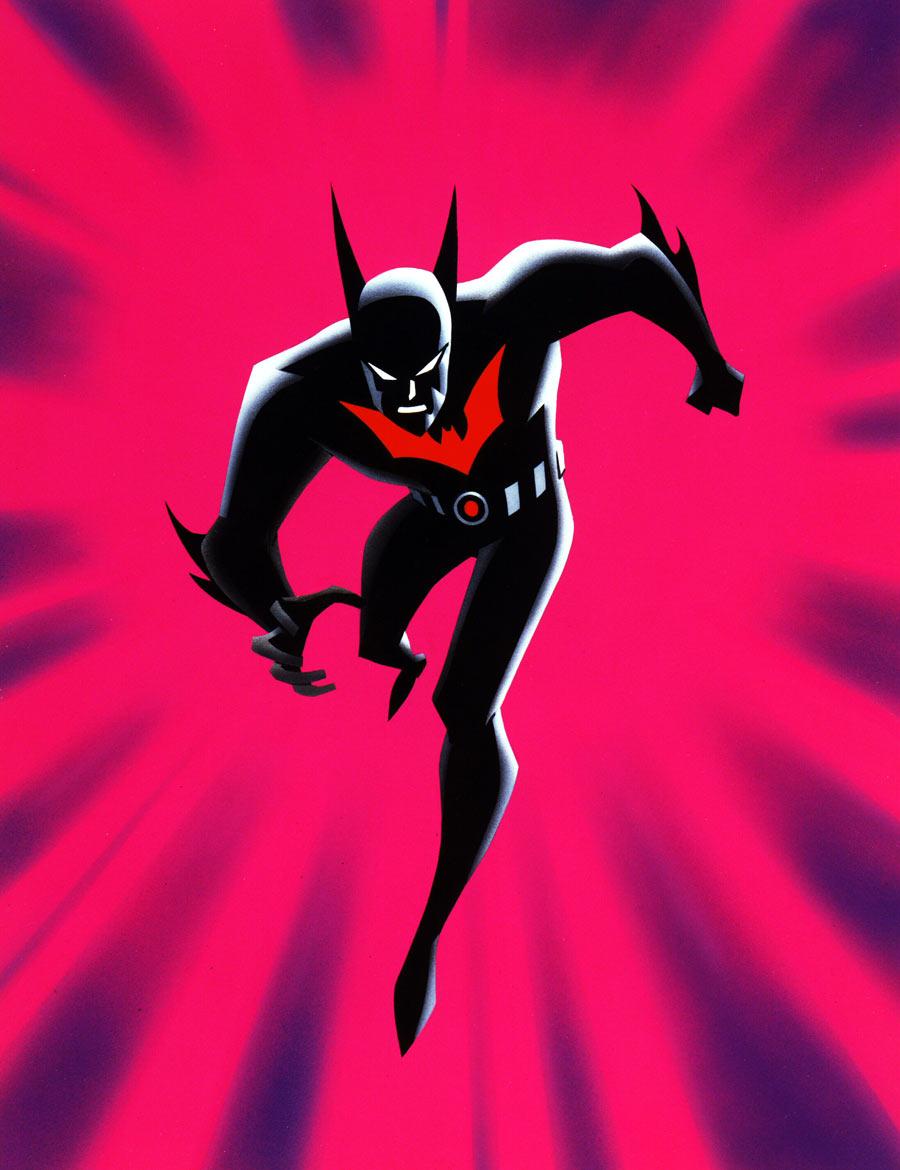
Seasons Three and Four (1998-2000)—Batman Beyond and Friends
It was announced in January 1998 that Kids’ WB! was preparing another Batman series. Originally titled Batman Tomorrow, it would later be rechristened as the more familiar Batman Beyond. In Modern Masters, Vol. 3: Bruce Timm (2004), Timm revealed the show’s birthing process:
[W]e had a meeting with Jamie Kelner—the president of the WB network—and he basically said, ‘Batman is doing well for us, but we think it’s time to do something different with Batman to freshen up the franchise.’ At first we were a little bit hesitant. Where’s this going? It quickly became apparent that he was talking about more than just revamping the costumes or the look of the show again, that he really wanted an all-new Batman show. He kept leading into it, and then he came out and said, ‘It would be great if we had a teen-aged Batman.’ And immediately all of us went, [disgustedly] ‘Aww, man. That’s the last thing we want to do.’ Also, Buffy the Vampire Slayer was their big hit at the time, and I think Jamie was very much influenced by Buffy. He really wanted us to Buffy-ize Batman.
We didn’t really want to do that, but it sounded like he was pretty serious about it, and rather than just handing it off to someone else to let them do it and possibly mess it up, we figured we kind of owed it to the character to give it our best shot and at least try to see what we could do with it. At that same meeting I hit upon the idea of setting it in the future so we could keep Bruce Wayne in the show, but just change his role slightly. The whole premise of Batman Beyond was basically thought up and nailed right there at that first meeting.
[…] It was a tricky show to do, because […] we were still finishing up Superman and finishing up the new Batman at the same time. We hardly had any development period on Batman Beyond. Jamie had basically given us a green light at that meeting, so we had to start from scratch and just go with it. We were making stuff up as we went along.
(To make things even more complicated, Timm also revealed, in Comicology Magazine #1 [2000], that this was the same meeting where another considered pitch was Batman training a kind of “Junior Justice League.” Said Timm: “He’d be training Aquaman Jr. and Wonder Woman Jr. and…by the time we got to that one, our heads were spinning, and we were thinking ‘We don’t want to do any of those. What do we do? We gotta come up with something quick.’ And, kind of on the spur of the moment, I said, ‘What if we set [a Batman series] in the future?”)
At any rate, I think Bruce Timm is underplaying something here, as we know from other sources that Kids’ WB! was undergoing changes during this time period. This was, after all, the same year that saw the network greenlight Animaniacs knock-off Histeria! and forced the popular Pinky and The Brain to add Tiny Toons’ Elmyra Duff to the show, resulting in the retooled (and reviled) Pinky, Elmyra & The Brain. This was the same group of television execs that wanted to turn Batman into a teen drama. In addition, the development of Batman Beyond added a third show to the already heavy workload of Superman and The New Batman Adventures, which—in turn, put more pressure on the creative team.
Now, before I continue, I want to say to you that I have nothing but respect for Bruce Timm, Paul Dini, Alan Burnett, and the entire cast and crew that had, by this point, created and sustained animated shows about Batman and Superman for eight years. Their passion made me interested in both superheroes and writing, but passion can only go so far. I firmly believe that the combination of creating three animated shows simultaneously in a toxic network environment led to a collective burnout that affected the quality of all three shows.
To me, the proof is in the pudding. By Fall 1998, there were 13 episodes of Superman and 11 episodes of The New Batman Adventures left to produce and air. To that, add 52 episodes of Batman Beyond, which would air in rapid succession from 1999 to 2001 (as well as Return of the Joker, which began production in 1999 and required massive changes following a backlash against violence in children’s media before being released, in edited form, in 2000). That’s a lot. Now, this is not the time to go into the pros and cons of Batman Beyond (for more about the trials and network hassles that went into making that show, check out the editorials from the Old Maid on this very site), but the added workload certainly caused a dip in quality when it came to Superman. If you compare the episodes from this season—“Where There’s Smoke,” “Obsession,” “Little Big Head Man,” “Superman’s Pal,” and “Unity,” to name a few—to the previous two seasons, you’ll no doubt notice that the newer episodes were lacking in terms of storytelling and animation. The New Batman Adventures fared slightly better, in my opinion, but this era still produced “Critters,” so make of it what you will.
Season Three saw the show’s presence expand, airing six times a week, an hour a day. This was followed with the addition of Batman Beyond, which debuted Sunday night, January 10, 1999, with the first regular Saturday airing occurring on January 16, 1999 (this date coincided with the airing of the final episode of The New Batman Adventures, “Mad Love”). The New Batman / Superman Adventures continued on in its timeslot, until it was eventually reduced to one episode a day for the following television season. And as for Superman, its Season Four consisted of three episodes: “The Demon Reborn” (another Batman team-up) and the two-part finale “Legacy” (Superman’s throwdown with Darkseid). As the series was not renewed, it ended on a down note, with Darkseid triumphant and the Man of Steel a pariah on his adopted homeworld.
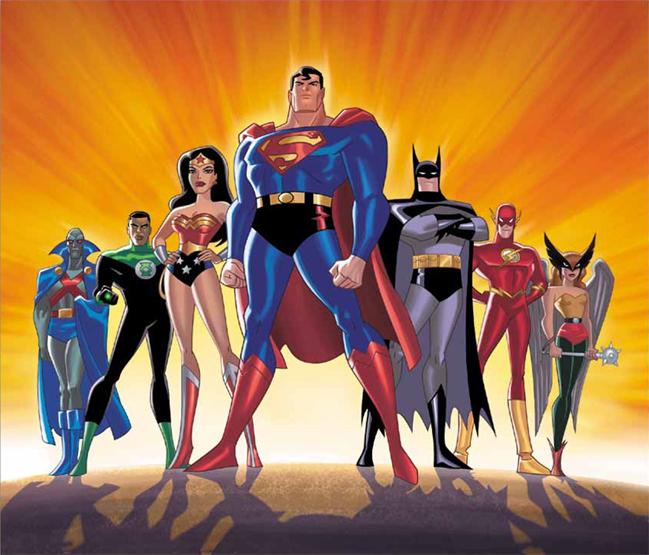
With Superman over and Batman Beyond halfway through its run, Bruce Timm began the inevitable talks with the network to begin work on his next show. A series centered around the Justice League was the obvious choice—and demoed in the two-part Batman Beyond episode “The Call”—but it was an option that Timm was famously resistant to. And so was Kids’ WB!, who wanted “kids only” in kids’ programming (in a Comics Continuum interview, Paul Dini said how, with a Justice League program, “all [Kids’ WB! sees] is a bunch of adults in suits”). As for the series pitches discussed in this round of talks, well, that would be an essay in itself (my favorite was a Batman Beyond spin-off pitch that sent Terry McGinnis to a colony on Mars). Fortunately, Cartoon Network stepped in and bought Justice League after “a single phone call.” Still, the transition to Justice League saw the loss of long-time producers Paul Dini and Alan Burnett, and the majority of Season One was considered to be less than stellar by fans (even Timm recognized this, later calling it 'bland'). It began to improve by “The Savage Time,” however, but it took a network change and the addition of writer Dwayne McDuffie to kick the burnout and put the lead back into their collective pencil. By comparison, Justice League Season Two was a significant improvement, and Justice League Unlimited ended the DCAU on a high note.

Legacy
Looking back after twenty-five years, one could say that, while not as influential as BTAS, Superman was significant in many ways. The most obvious influence was on Justice League and Justice League Unlimited, where many characters and plotlines started in Superman were continued. The Cadmus Arc, from JLU, hinges on the events of “Legacy,” and Lex Luthor remained a recurring adversary throughout both series. Also significant was Brainiac, whose storyline evolved in “Twilight,” where he sought to utilize Superman’s DNA to become an organic life form (similar to the 1977 sci-fi / horror film Demon Seed) and “Divided We Fall,” where he temporarily merged with Lex Luthor. Under the tutelage of Green Lantern and Green Arrow, Supergirl grew into more professional hero on Unlimited, cumulating in her decision to leave the League and join the Legion of Super Heroes in “Far from Home.” Other episodes featured memorable reappearances of Mercy Graves, Metallo, Parasite, Volcana, and Toyman. And, of course, Darkseid made his presence known in the aforementioned “Twilight” and the two-part JLU series finale, “Alive!” and “Destroyer.”
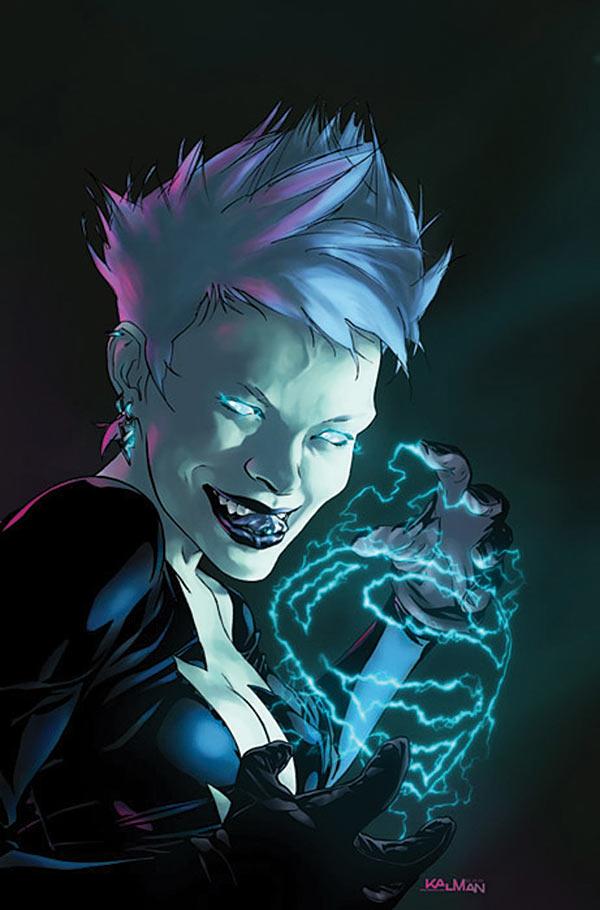 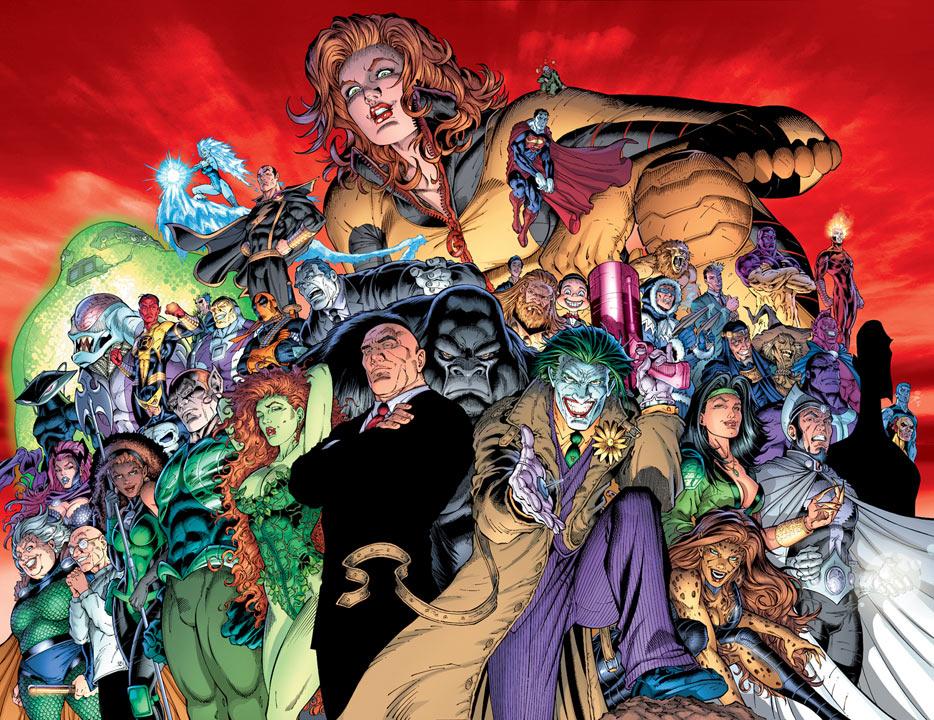 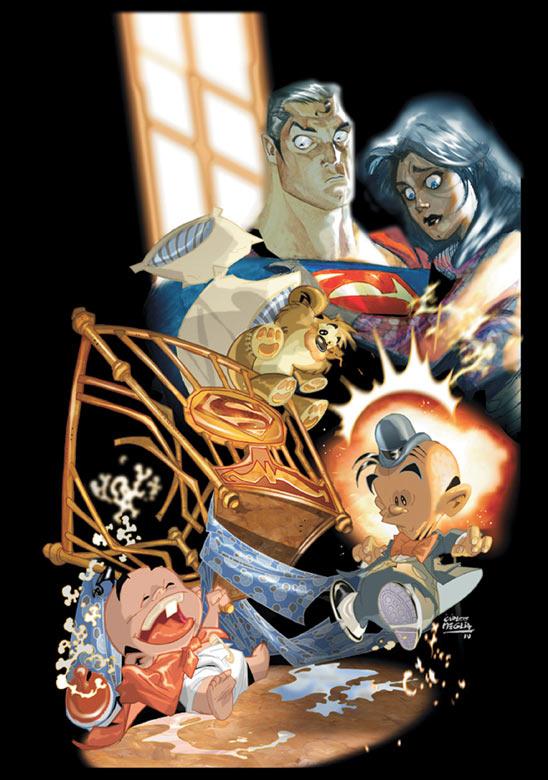
Another way that Superman left its mark was in the comic books. Like Harley Quinn before them, both Mercy Graves and Livewire migrated to the comics—in Detective Comics #735 (August 1999) and Action Comics #835 (March 2006), respectively—and eventually found their way into other television shows and film. Also, an appearance by the STAS Toyman on the cover of Justice League of America #13 (November 2007), which was written by Dwayne McDuffie, implied that the character was to appear in the storyline. Sadly, interference from editorial may have changed those plans (or maybe it was just an Easter Egg). Speaking of which, on occasion, you may notice that certain Superman characters are drawn to resemble their animated counterparts in the comics. This may be minor, but it is appreciated.
Still, the animated Batman shows cast a long shadow. Reflecting on his time writing for Superman, Evan Dorkin said, in his 2006 World’s Finest interview, “I always felt that Superman was the red-headed stepchild of the Warner [Bros.] shows. As soon as they got the rights back to Batman, it felt like everybody ran from Superman. The fans loved the show, but when Batman came back; they were all so excited.” Perhaps an HD retouching will permit those fans to remember how important this series was, allowing it to emerge from that shadow once more.
Click here to discuss this editorial!
Joseph Davis is a regular contributor to the community, having run the Justice League Watchtower website and posting on WF forums under the name "Karkull."
Follow The World's Finest on
YouTube - Twitter - Facebook
 |